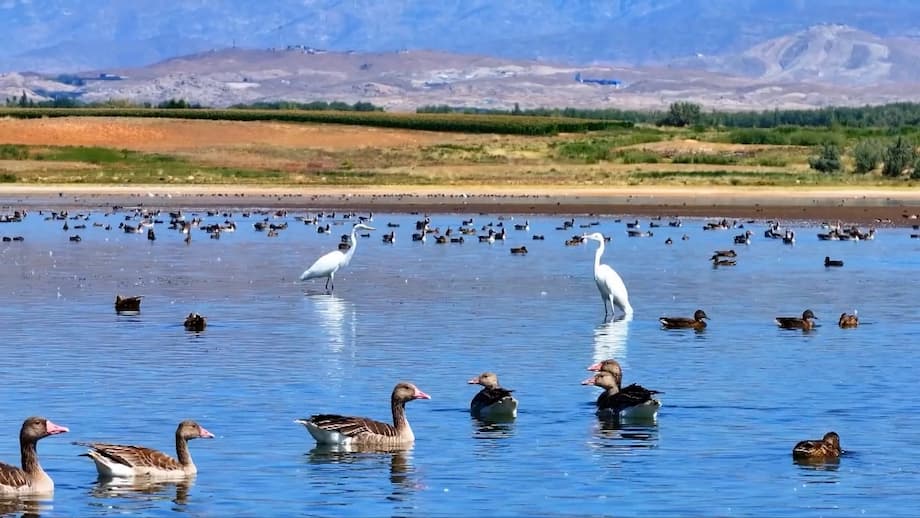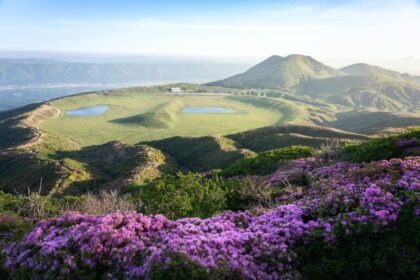Migratory Birds Transform Xinjiang’s Aweitan Reservoir into a Biodiversity Haven
Each autumn, as temperatures begin to drop across the vast steppes and mountains of northern Asia, a remarkable natural spectacle unfolds in China’s Xinjiang Uygur Autonomous Region. The Aweitan Reservoir, nestled in Altay Prefecture along the lower reaches of the Kelan River, becomes a vibrant sanctuary for thousands of migratory birds journeying south. Egrets, wild ducks, geese, and a dazzling array of other species descend upon the reservoir, turning it into a living tableau of movement and color that highlights both the region’s rich biodiversity and its growing importance in global conservation efforts.
- Migratory Birds Transform Xinjiang’s Aweitan Reservoir into a Biodiversity Haven
- Why Is Aweitan Reservoir So Important for Migratory Birds?
- How Does the Reservoir Support Biodiversity?
- Conservation Efforts and Challenges
- Birdwatching and Ecotourism: A New Opportunity
- The Global Significance of Xinjiang’s Wetlands
- Community and Cultural Connections
- In Summary
Why Is Aweitan Reservoir So Important for Migratory Birds?
The Aweitan Reservoir’s significance lies in its strategic location and unique ecological features. Situated in the northern reaches of Xinjiang, the reservoir is part of a network of wetlands, lakes, and riverine habitats that serve as critical stopover points for birds migrating between Siberia, Central Asia, and warmer southern regions. These stopovers are essential: they provide birds with the food, rest, and shelter needed to survive their arduous journeys, which can span thousands of kilometers.
According to birding experts and ecological surveys, reservoirs like Aweitan are especially valuable in arid or semi-arid landscapes such as the Jungar Basin. Here, water bodies are rare, making each oasis a lifeline for wildlife. The basin itself is bordered by the Tianshan Mountains to the south and the Altai Mountains to the north, creating a mosaic of habitats from alpine meadows to scrubby semi-deserts and wetlands. This diversity supports an impressive range of bird species, some of which are rarely seen elsewhere in China.
Key Species Observed at Aweitan
Recent observations at Aweitan Reservoir have recorded:
- Egrets – graceful waders that forage in shallow waters
- Wild ducks and geese – including both common and rare migratory species
- Shorebirds – such as sandpipers and plovers, which rely on mudflats and shallow edges
- Raptors – birds of prey like buzzards and falcons, drawn by the abundance of smaller birds and rodents
Birdwatchers have also reported sightings of species more typical of Europe than East Asia, including the Mistle Thrush and the White-headed Duck, underscoring the region’s unique biogeographical position.
How Does the Reservoir Support Biodiversity?
The Aweitan Reservoir is more than just a pit stop for birds—it is a thriving ecosystem in its own right. The combination of open water, reed beds, and surrounding grasslands creates a variety of microhabitats. These support not only birds but also fish, amphibians, and a host of invertebrates, forming a complex food web.
During migration season, the reservoir’s productivity peaks. Birds can be seen foraging in the shallows, diving for fish, or plucking insects from the air. The presence of so many birds in one place also attracts predators, from raptors overhead to foxes and other mammals on the ground. This seasonal abundance is a boon for local biodiversity and a testament to the health of the ecosystem.
Wetlands like Aweitan are also crucial for maintaining water quality, controlling floods, and storing carbon. Their preservation is not only important for wildlife but also for the people who depend on these landscapes for agriculture, fishing, and recreation.
Conservation Efforts and Challenges
Recognizing the ecological value of the Aweitan Reservoir, local and national authorities have taken steps to protect and manage the area. Conservation measures include monitoring bird populations, restricting certain human activities during peak migration periods, and restoring degraded habitats. These efforts are part of a broader push across China to safeguard key wetlands and promote biodiversity.
However, challenges remain. Water management is a constant concern in Xinjiang, where competing demands from agriculture, industry, and urban development can threaten the delicate balance of wetland ecosystems. Climate change adds another layer of complexity, with shifting rainfall patterns and rising temperatures potentially altering migration routes and the availability of suitable habitats.
Expert Perspectives
Birding experts who have explored northern Xinjiang emphasize the region’s untapped potential for both conservation and ecotourism. As one ornithologist noted:
“Northern Xinjiang is still underbirded compared to other parts of China, but its reservoirs and wetlands are absolutely vital for migratory waterfowl and shorebirds. Protecting these sites is essential not just for birds, but for the entire ecosystem.”
Local communities are increasingly involved in conservation efforts, recognizing that healthy wetlands can bring economic benefits through tourism and sustainable resource use.
Birdwatching and Ecotourism: A New Opportunity
The annual arrival of migratory birds at Aweitan Reservoir has not gone unnoticed by nature enthusiasts. Birdwatchers from across China and beyond are drawn to the region, hoping to catch a glimpse of rare species and witness the spectacle of mass migration. The reservoir’s scenic beauty, set against the backdrop of distant mountains and golden autumn foliage, adds to its appeal.
Ecotourism offers a promising path for balancing conservation with development. By promoting responsible tourism, local authorities can generate income for communities while raising awareness about the importance of protecting natural habitats. Guided birding tours, educational programs, and improved visitor facilities are all part of ongoing efforts to make Aweitan a model for sustainable nature tourism in Xinjiang.
The Global Significance of Xinjiang’s Wetlands
The story of Aweitan Reservoir is part of a larger narrative about the role of Central Asian wetlands in global bird migration. Many of the species that stop in Xinjiang are long-distance migrants, traveling from breeding grounds in Siberia or Mongolia to wintering sites as far south as India, Southeast Asia, or even Africa. These journeys are perilous, and the loss of even a single stopover site can have cascading effects on bird populations.
International conservation organizations have identified the Central Asian Flyway—a major migration corridor that includes Xinjiang—as a priority for protection. Efforts to safeguard key wetlands along this route are essential for maintaining healthy populations of waterbirds, many of which are threatened by habitat loss and climate change.
China’s Commitment to Wetland Protection
China has made significant strides in recent years to protect its wetlands. The government has designated numerous sites as nature reserves, Ramsar Wetlands of International Importance, and bird sanctuaries. Public awareness campaigns and scientific research are helping to build support for conservation at both the local and national levels.
The success of places like Aweitan Reservoir demonstrates what is possible when ecological values are integrated into land management and development planning. It also highlights the need for ongoing vigilance and adaptive management in the face of changing environmental conditions.
Community and Cultural Connections
For the people of Altay and the wider Xinjiang region, the annual arrival of migratory birds is more than just an ecological event—it is a cultural touchstone. Local residents often gather at the reservoir to watch the birds, take photographs, and celebrate the beauty of their natural heritage. These traditions foster a sense of stewardship and pride, encouraging communities to participate in conservation efforts.
Social media platforms have played a role in spreading awareness, with images and videos of the birds at Aweitan reaching audiences far beyond Xinjiang. This visibility helps to build support for wetland protection and showcases the region’s unique landscapes to the world.
In Summary
- The Aweitan Reservoir in Xinjiang’s Altay Prefecture is a vital stopover for migratory birds traveling along the Central Asian Flyway.
- Its diverse habitats support a wide range of species, including egrets, ducks, geese, and rare European birds.
- Conservation efforts are underway to protect the reservoir’s ecological integrity amid challenges from water management and climate change.
- Birdwatching and ecotourism are emerging as sustainable ways to support local communities and raise awareness about wetland protection.
- The story of Aweitan highlights the global importance of safeguarding wetlands for both wildlife and people.












